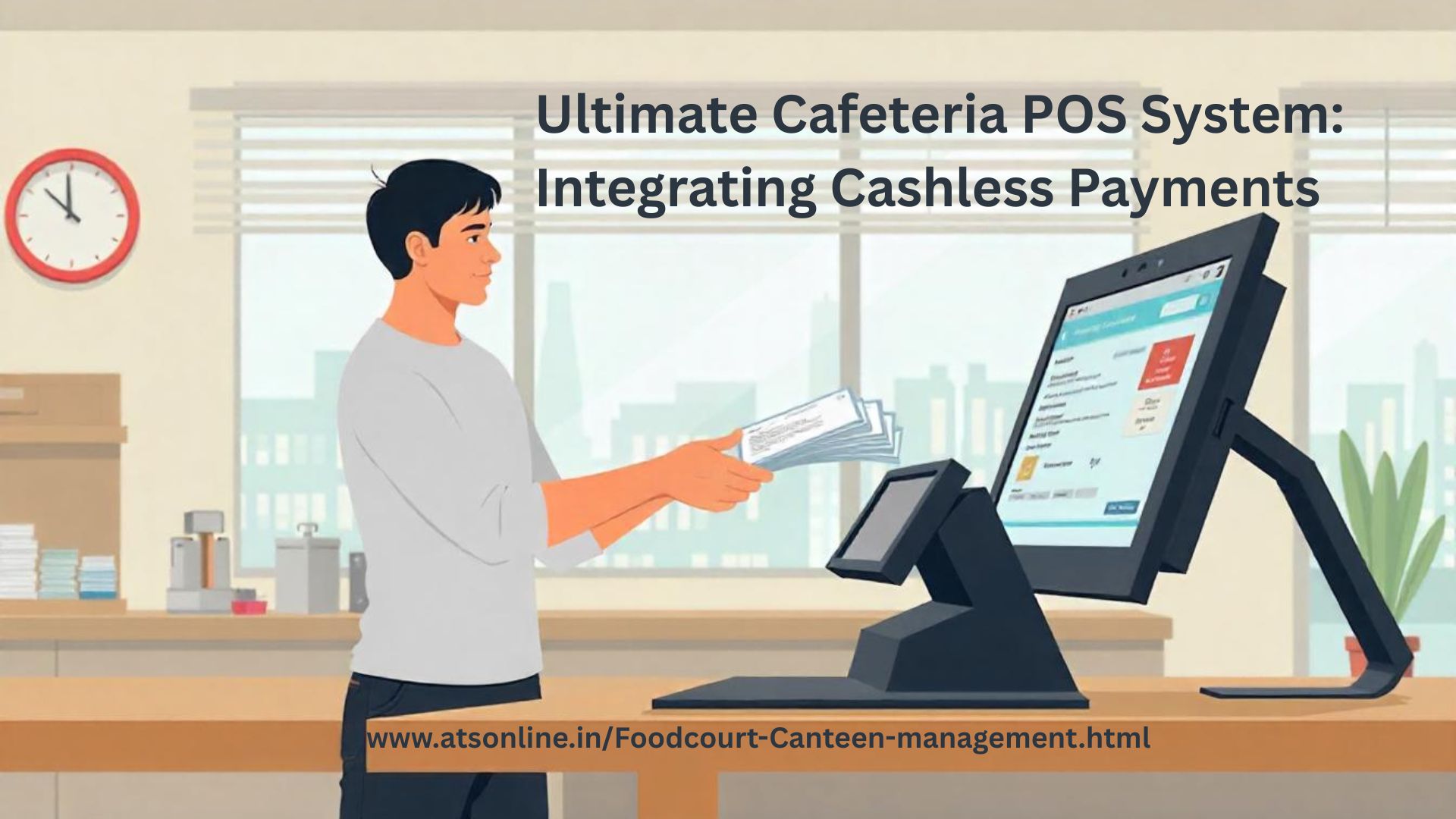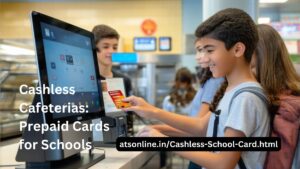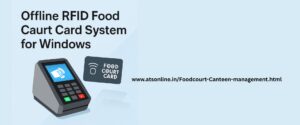Picture the midday rush. Long lines snake through your cafeteria, employees are fumbling for change, and your staff is struggling to keep up with manual transactions. This daily chaos doesn’t just slow down service; it creates frustration and operational bottlenecks. The solution isn’t in the cloud; it’s in a reliable, offline cafeteria POS system running on a dedicated Windows computer.
If your organization prioritizes speed, security, and unwavering stability, this guide is for you. We’ll dive deep into how a dedicated RFID card-based canteen management system can revolutionize your operations—from increasing transaction speed to providing powerful local reporting, all without relying on an internet connection.
What is a Windows-Based Cafeteria POS System (And Why is it Different)?
Unlike cloud-based alternatives that depend on a constant internet connection, an offline Windows-based cafeteria POS is software installed directly onto your local computers. It operates on your own internal network, making it exceptionally reliable and fast. Think of it as your own private financial highway, completely separate from the public internet traffic.
This fundamental difference is crucial for environments where downtime is not an option. Here’s a clear breakdown of how it stacks up against cloud-based systems:
| Feature | Offline Windows POS | Cloud-Based POS |
| Internet Dependency | None. Operates fully during internet outages. | High. Useless without a stable connection. |
| Data Security | Maximum. All data is stored on your local server. | Data is stored on third-party servers. |
| Transaction Speed | Instant. No delay for online authorization. | Slower due to reliance on internet latency. |
| Update Process | Controlled. You decide when to install updates. | Often automatic and can occur at inconvenient times. |
For many, the control and reliability of a dedicated lunchroom point of sale are non-negotiable benefits.
Unbeatable Benefits of an Offline RFID Cafeteria POS System
Choosing an offline, RFID-powered system offers unique advantages focused on stability and control. Here’s why it’s the superior choice for many organizations.
1. Unmatched Reliability: Never Down, Always On
This is the single most important benefit. Because the system is entirely self-contained, internet outages have zero impact on your ability to process payments. Your cafeteria runs even when your internet doesn’t.
2. Blazing-Fast Transaction Speeds
With an RFID system, a transaction is a simple, sub-second tap. There is no lag from online authorizations, chip reading, or PIN entry. This speed is essential for getting students and employees through the line quickly.
3. Enhanced Data Security and Control
In an era of data breaches, keeping sensitive information local is a major advantage. All sales data and user account information are stored on your local server, not a third-party cloud, making it ideal for schools, hospitals, and secure corporate campuses.
4. Drastically Reduced Queues
Faster transactions directly lead to shorter lines. By processing each person in a matter of seconds, you can significantly increase throughput during peak hours, creating a much better experience for everyone.
5. Simplified and Centralized Account Management
This closed-loop cashless system makes managing accounts easy. Balances for students or employees are topped up at a designated cashier or admin office, giving you a single point of financial control.
6. Accurate Sales and Inventory Reporting
Even though it’s offline, the cafeteria billing software generates powerful reports on what’s selling and when. This data is critical for making smarter purchasing decisions and reducing food waste—a major cost center for any food service operation.
Fact: According to the Food and Agriculture Organization (FAO), a significant amount of food is lost in consumption stages due to poor stock management, a problem that detailed reporting helps solve.
7. Seamless Management of Meal Plans and Subsidies
This is a critical feature for any school cafeteria payment system or corporate canteen. The software automatically recognizes the user and applies the correct meal plan, spending limit, or subsidy without needing to check with an online server.
8. Lower Risk of Cash Handling Errors
By transitioning to a truly cashless environment, you minimize the amount of physical money your staff handles. This dramatically reduces the risk of human error in counting change and deters employee theft.
9. One-Time Cost, Long-Term Value
Many offline software solutions are sold as a one-time license purchase rather than a recurring monthly subscription. For organizations with tight or fixed budgets, this predictable, long-term investment is often far more attractive.
How Does a Windows-Based RFID Cafeteria System Work?
The technology behind an RFID-based cafeteria management software is robust yet straightforward. It consists of a few key components working in harmony on your local network.
[Image Suggestion: A simple diagram showing a Server PC, a POS Terminal, a Top-Up Station, and an RFID card connecting them.]
- The Core: The Central Windows Server
This is the “brain” of your operation. It’s a dedicated computer on your network that securely stores the database of all users, their account balances, your full menu, and all transaction history. - The Payment Point: The POS Terminal with RFID Reader
This is the cashier’s station. A staff member uses an intuitive touch-screen interface to select items. The user simply taps their RFID card on the reader, and the total amount is instantly deducted from their locally-stored balance. - The Fueling Station: The Manual Top-Up Process
So, how do people add money? Users (or parents of students) visit a designated top-up station—often the main cashier or an administrative office. They provide funds (via cash or a separate debit/credit terminal), and the administrator updates their account balance directly in the system. - The Key: The RFID-Enabled ID Card
The RFID card system is the key to it all. Existing employee or student ID cards can often be issued or retrofitted with a small, passive RFID chip. This turns a simple ID into a secure and convenient key for the entire payment ecosystem.
Must-Have Features in a Modern Windows Cafeteria POS
When evaluating an offline POS system for a cafeteria, ensure it includes these critical, robust features:
- Complete Offline Functionality: The system must perform all core functions—sales, reporting, and account deductions—without any internet access.
- Integrated RFID Reader Support: Flawless hardware compatibility with industry-standard RFID readers is non-negotiable for ensuring transaction speed.
- Intuitive Touch-Screen Interface: The software should be easy to learn and use, minimizing staff training time and reducing errors during the lunch rush.
- Detailed Local Reporting: Look for the ability to generate customizable reports on sales, user spending habits, and inventory levels directly from your server.
- Prepaid and Postpaid Account Support: The system needs the flexibility to handle both prepaid accounts (for students) and postpaid accounts (for staff on a payroll-deduct plan).
- Reliable Hardware and Support: A great software needs durable hardware. Partner with a provider like Advance Technology Systems that offers robust terminals and dependable technical support.
Choosing the Right System: A Quick Checklist
To ensure you select the perfect corporate cafeteria POS system or school solution, ask yourself these questions:
- What is our primary environment (School, Corporate, Hospital)?
- How many daily users will the system need to support?
- Do we need to manage complex meal subsidies or departmental billing?
- What specific reports are most important for our operational efficiency?
Conclusion: Take Control of Your Cafeteria
In a world demanding constant connectivity, there is immense power in the reliability of an offline system. A Windows-based cafeteria POS system integrated with RFID technology offers unparalleled speed, security, and control over your dining operations. By eliminating internet dependency and streamlining payments with RFID cards, you create a frictionless experience that benefits both your staff and your customers. It’s the definitive way to conquer the lunch rush for good.
Ready to build an unstoppable cafeteria operation? Contact Advance Technology Systems today for a personalized demo of our robust, offline cafeteria POS system and see the difference for yourself.
Frequently Asked Questions (FAQs)
1. What happens to our cafeteria POS system if the internet goes down?
Absolutely nothing. The primary advantage of an offline, Windows-based cafeteria POS system is that it operates entirely on your local network. This means internet outages have zero impact on your ability to process payments, manage accounts, or serve customers. Your operations remain fast and reliable, always.
2. How do users add money to their RFID cards in an offline system?
Adding funds is a simple and controlled process. Users (or parents) visit a designated top-up station, typically at the main cashier or an administrative office. There, they can add value to their RFID card using cash or a separate debit/credit card machine. The administrator then instantly updates the balance in the local system.
3. Is an offline cafeteria POS system secure?
Yes, it is extremely secure. Unlike cloud systems where data is stored on third-party servers, all your financial and user data is stored on your own local server. This closed-loop environment significantly reduces exposure to external online threats, making it an ideal choice for secure environments like schools and corporate campuses.
4. Can this system handle complex school meal plans or employee subsidies?
Yes, this is a core feature of a specialized canteen management system. The software is designed to manage complex rules automatically. When a student or employee taps their card, the system instantly recognizes their profile and applies any free meal plans, fixed subsidies, or spending restrictions without any manual input from the cashier.
5. What hardware is required for an RFID cafeteria POS system?
A typical setup for a robust RFID cafeteria POS system includes three key components:
- A Windows-based POS Terminal: An intuitive touch-screen computer for cashiers.
- An Integrated RFID Reader: A device connected to the terminal that reads the payment cards.
- A Local Server PC: A dedicated computer that securely stores the system software and all your data.
6. Why choose an RFID system over QR codes or mobile apps?
While QR codes and apps have their place, an RFID card system is superior for a high-volume cafeteria environment for several key reasons:
- Speed: Tapping a card is faster than opening an app and scanning a code.
- Reliability: It doesn’t depend on a user’s phone being charged or having a signal.
- Durability: ID cards are more durable and less likely to be lost than a personal phone, especially in a school setting.




